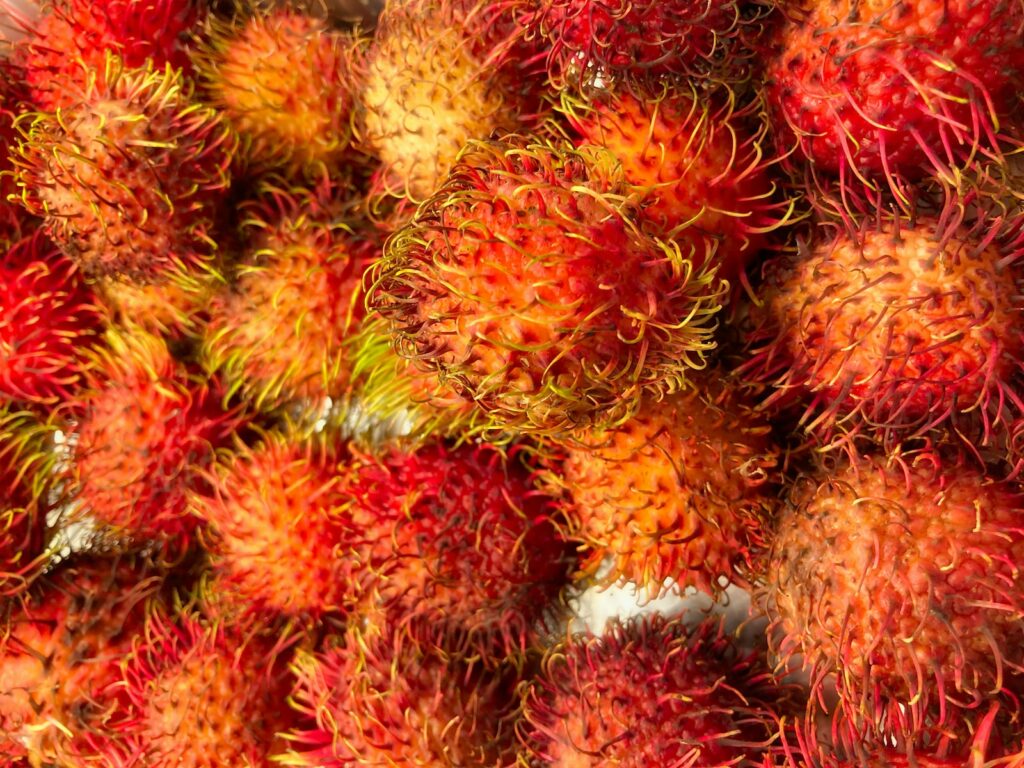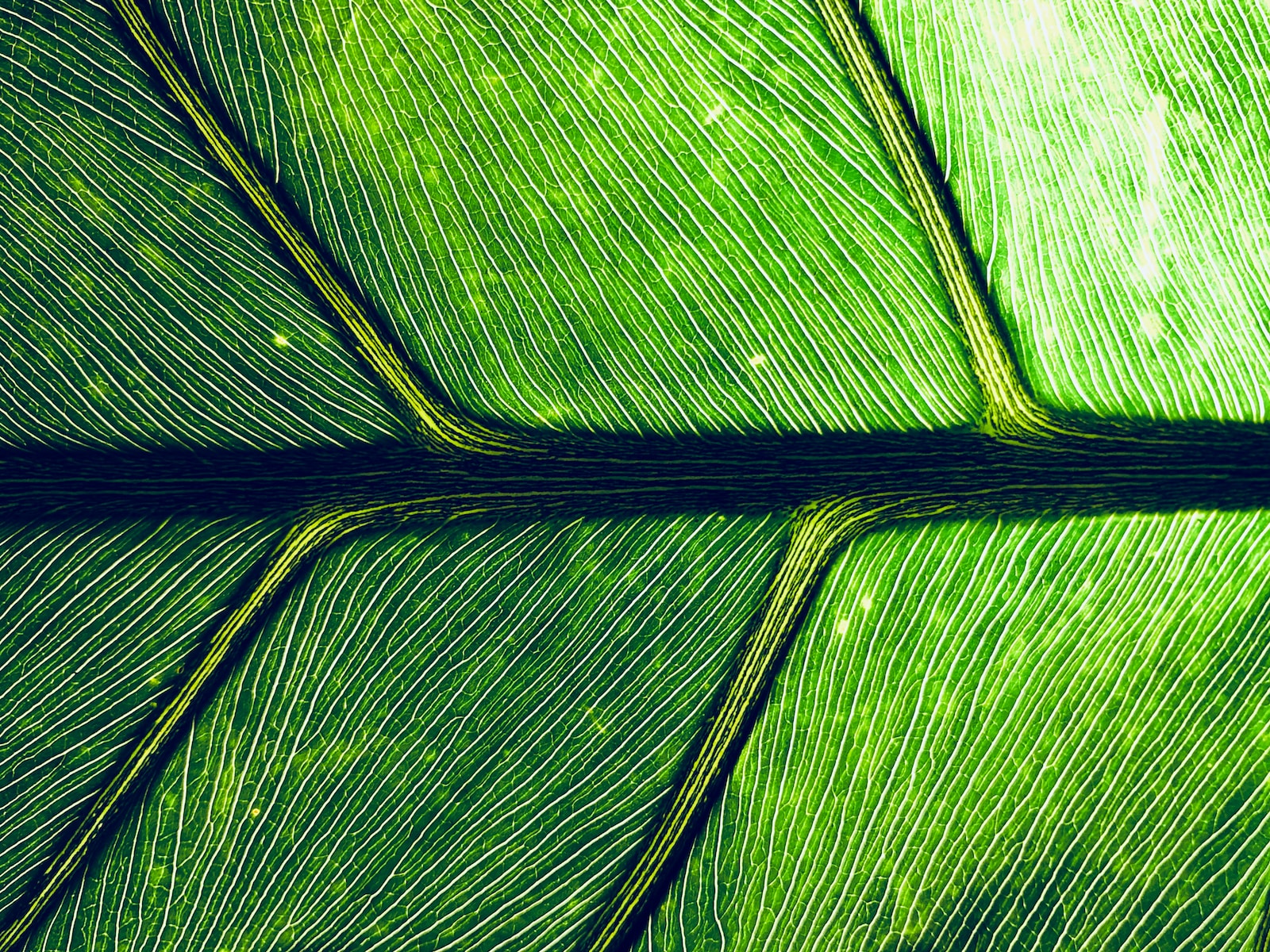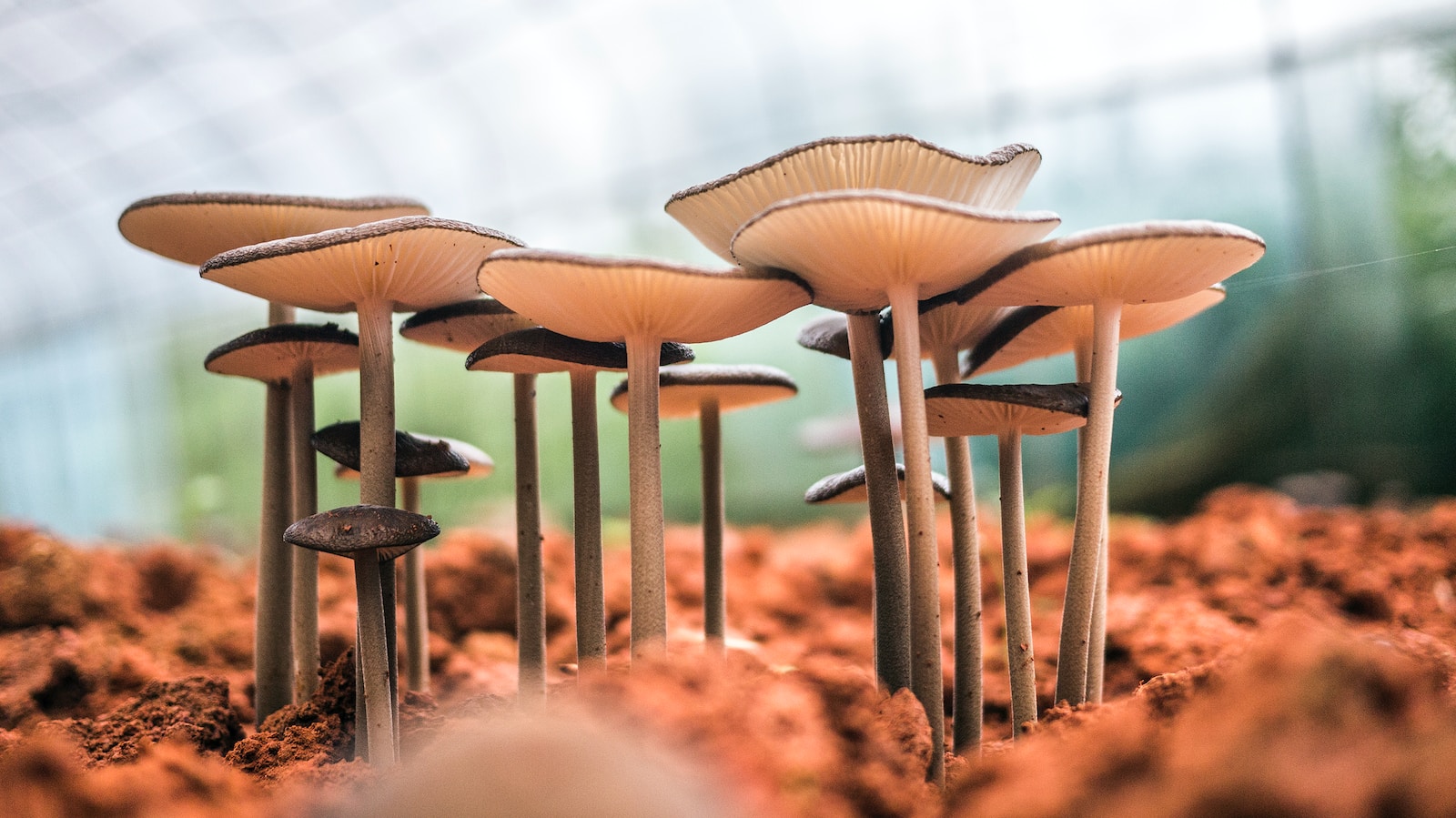Welcome to Tropical Temptation: Capturing the Allure of Exotic Fruits! If you’re a food lover and photography enthusiast, this blog is for you. Get ready to embark on an exciting journey into the vibrant and delicious world of exotic fruits. From their unique colors and textures to their tantalizing tastes, we’ll explore how to capture these tempting treats through the lens of your camera. Join me as we uncover the secrets to creating stunning photos that showcase the beauty and allure of these exotic fruits. Let’s dive in!
Table of Contents
- Choosing the Perfect Exotic Fruit
- Mastering Your Camera Techniques
- Capturing the Allure of Exotic Fruits: A How-To Guide
- Frequently Asked Questions
- 1. What are exotic fruits?
- 2. How can I capture the allure of exotic fruits in my photos?
- 3. What camera equipment is best for photographing exotic fruits?
- 4. How can I make my exotic fruit photos more vibrant?
- 5. Where can I find exotic fruits for photography?
- 6. Are there any post-processing techniques to enhance my exotic fruit photos?
- 7. Any tips for photographing exotic fruits while traveling?
- Wrap Up
Choosing the Perfect Exotic Fruit
When it comes to capturing the allure of exotic fruits, selecting the right subject is crucial. Opt for fruits that are visually striking, such as dragon fruits with their vibrant pink flesh or kiwano melons with their spiky orange exterior. Experiment with different shapes, sizes, and textures to add depth and interest to your images. Don’t be afraid to step out of your comfort zone and explore lesser-known fruits with intriguing visual characteristics.
Lighting Magic: Showcasing Colors and Details
Good lighting is the key to bringing out the true beauty of exotic fruits in your photographs. Natural light is ideal, so take advantage of soft, diffused sunlight during the early morning or late afternoon. Position your fruits near a well-lit window or set up a makeshift studio with reflectors to bounce light onto your subject. Avoid harsh shadows and strive for a balance that highlights the vibrant colors and intricate details of the fruits.
Composition: A Feast for the Eyes
In photography, composition plays a vital role in capturing the viewer’s attention. Use the rule of thirds to create visually pleasing and balanced compositions. Experiment with different angles, depths of field, and perspectives. Play around with props and backdrops that complement the colors and textures of the fruits. Consider incorporating organic elements like leaves or flowers to enhance the tropical vibe. Let your creativity run wild and create mouthwatering visuals.
Macros and Close-Ups: Revealing Hidden Beauty
One of the most captivating aspects of exotic fruits is their intricate patterns and textures, often hidden to the naked eye. With macro photography, you can zoom in and capture the tiniest details of your subject. Explore the mesmerizing patterns on the skin of a pineapple or the delicately veined flesh of a passion fruit. Get close, focus on the details, and unveil the hidden beauty that makes these fruits truly enchanting.
Playing with Colors: Contrast and Harmonious Combinations
Color is a powerful tool in photography, particularly when it comes to capturing exotic fruits. Seek out contrasting colors to create eye-catching images that pop. Pair a vibrant yellow mango with a deep purple dragon fruit for a stunning visual contrast. Alternatively, explore harmonious color combinations, such as blending shades of green with a splash of pink from a guava. Experiment with different color schemes and let your photos exude tropical allure.
Did you know that the durian fruit, known for its divisive smell, is banned in many public places and hotels in Southeast Asia? Its pungent odor has led to it being dubbed the "king of fruits" by some while others can't stand the smell!
Mastering Your Camera Techniques
Understanding Your Camera Settings
To capture stunning images of exotic fruits, it’s essential to have a good grasp of your camera settings. Experiment with aperture, shutter speed, and ISO to achieve the desired depth of field, motion blur, and level of exposure. Explore the macro mode or invest in a macro lens to capture intricate details. Don’t be afraid to step out of auto mode and unleash the full potential of your camera.
Controlling Depth of Field
Controlling the depth of field helps you isolate the subject and make it stand out from the background. With wide apertures (low f-stop numbers), you can create a shallow depth of field, blurring the background and bringing the fruit into focus. Use a tripod or stabilize your camera to avoid blur, especially when shooting at low apertures and slower shutter speeds. Experiment with different depths of field to achieve the desired effect.
Utilizing White Balance
White balance ensures accurate color rendering in your photographs. Experiment with different white balance settings to achieve the desired temperature and mood. For warm, inviting images, use a slightly higher Kelvin value, while cooler tones can be achieved by lowering the Kelvin value. Remember, white balance can greatly affect how the colors of your exotic fruits appear in the final image, so don’t overlook this important aspect.
Playing with Perspectives
Varying your perspectives adds visual interest and allows you to explore the exotic fruits from unique angles. Capture a bird’s-eye view by shooting from above or get down low for a worm’s-eye view. Experiment with unconventional angles to break free from the ordinary. Try shooting straight on, diagonally, or from different sides to find the most captivating perspective for each fruit.
Editing and Enhancing
Post-processing is an integral part of digital photography. Experiment with editing software to enhance the colors, contrasts, and sharpness of your images. Adjust the saturation and vibrancy to bring out the tropical allure of the fruits. Fine-tune the exposure levels and remove any distractions or imperfections. But remember, don’t go overboard with editing – strive for a natural look that still remains true to the vibrant essence of the exotic fruits.
And there you have it – a comprehensive guide to capturing the allure of exotic fruits through photography. With these tips and techniques, you’re well on your way to creating tantalizing images that showcase the vibrant colors, intricate details, and mouthwatering beauty of these tropical treats. So grab your camera, explore the world of exotic fruits, and let your creativity shine through your lens!

Capturing the Allure of Exotic Fruits: A How-To Guide
Are you a food enthusiast and photography lover? If so, you’ve come to the right place! This guide is dedicated to helping you capture the delicious and vibrant essence of exotic fruits through your camera lens. From composition to lighting techniques, we’ve got you covered! Let’s dive in.
1. Choose the Perfect Fruits
When it comes to exotic fruits, there’s an abundance of options to choose from. Whether it’s the vibrant colors of dragon fruit or the unique shapes of star fruit, selecting visually appealing fruits is essential for capturing captivating photos. Look for fruits with rich colors, interesting textures, and appealing shapes to add visual interest to your shots.
2. Set the Stage
Creating an enticing backdrop for your exotic fruits can make a huge difference in your photographs. Opt for a plain background or use props like wooden boards or colorful fabrics to enhance the overall composition. Consider experimenting with different textures and surfaces to bring out the natural beauty of the fruits.
3. Play with Lighting
Lighting is a crucial element in food photography, and exotic fruits are no exception. Natural light is often the best choice for shooting fruits as it results in a more vibrant and authentic look. Position your fruits near a window or take them outdoors to make the most of natural light. Experiment with different angles to create interesting shadows and highlights.
4. Experiment with Composition
Composition is all about arranging the fruits and other elements in your frame to create an appealing visual narrative. Try different angles, such as overhead shots or close-ups, to emphasize the unique features of the fruits. Consider the rule of thirds and use leading lines to guide the viewer’s eyes through the image. Don’t be afraid to get creative and experiment with different compositions to tell a compelling story.
5. Show the Details
Exotic fruits are filled with intricate details that deserve to be highlighted in your photographs. Get up close and personal to capture the textures, patterns, and tiny seeds of the fruits. Use a macro lens or the macro mode on your camera to achieve sharp and detailed shots. By showcasing the minute details, you’ll provide your audience with a truly immersive experience.
6. Add a Pop of Color
Exotic fruits are known for their vibrant colors, so why not make them the star of the show? Use contrasting colors to create a visually striking composition. Incorporate colorful props or backgrounds to enhance the overall appeal of your photographs. Play with different color palettes to evoke different moods and emotions in your audience.
7. Don’t Forget to Style
Food styling can elevate your photographs to a whole new level. Pay attention to the way you arrange the fruits, ensuring they look fresh, appetizing, and tempting. Garnish with fresh herbs or add a sprinkle of powdered sugar to give your photos an extra touch of elegance.
Now that you have these tips and techniques at your disposal, it’s time to grab your camera and explore the tropical world of exotic fruits. Remember, practice makes perfect, so don’t shy away from experimentation and embracing your unique artistic style. Happy shooting!
Frequently Asked Questions
1. What are exotic fruits?
Exotic fruits are typically grown in tropical regions and are not commonly found in local grocery stores. They often have unique flavors, vibrant colors, and unusual shapes, making them extremely appealing to photographers and food enthusiasts.
2. How can I capture the allure of exotic fruits in my photos?
To capture the allure of exotic fruits in your photos, consider the following techniques:
- Play with lighting: Experiment with natural, diffused, or artificial lighting to enhance the colors and textures of the fruits.
- Choose a captivating backdrop: Opt for colorful or contrasting backgrounds to make the fruits stand out.
- Showcase the details: Focus on the unique features of each fruit, such as its skin patterns, seeds, or vibrant flesh.
- Experiment with composition: Try different angles, perspectives, and arrangements to create visually appealing compositions.
- Use props sparingly: Enhance the beauty of the fruits with minimal props that complement their colors or shapes.
3. What camera equipment is best for photographing exotic fruits?
While you can use any camera to capture stunning photos of exotic fruits, a good quality DSLR or mirrorless camera with a macro lens is ideal for capturing the intricate details and textures. However, even a smartphone with a high-resolution camera can produce impressive results with proper lighting and composition techniques.
4. How can I make my exotic fruit photos more vibrant?
To make your exotic fruit photos more vibrant, try the following tips:
- Enhance colors in post-processing: Adjust the saturation and vibrance levels to make the colors pop.
- Focus on ripe fruits: Choose perfectly ripe fruits with intense colors to capture their natural vibrancy.
- Consider using props: Incorporate colorful props or garnishes to add an extra pop of color to your compositions.
- Experiment with different fruit combinations: Mix and match fruits with complementary or contrasting colors to create visually striking arrangements.
5. Where can I find exotic fruits for photography?
You can find exotic fruits at specialty grocery stores, farmers markets, or even online. Look for stores that specialize in international produce or contact local farmers who may grow unique fruits. Additionally, try reaching out to local exotic fruit enthusiasts or gardeners who might be willing to let you photograph their collections.
6. Are there any post-processing techniques to enhance my exotic fruit photos?
Absolutely! Post-processing can significantly enhance the allure of your exotic fruit photos. Consider techniques such as adjusting exposure, contrast, and sharpness, as well as removing any distractions or imperfections. Experiment with various filters or presets to give your photos a unique look that amplifies their beauty.
7. Any tips for photographing exotic fruits while traveling?
When photographing exotic fruits while traveling, keep the following tips in mind:
- Pack essential gear: Make sure to bring your camera, lenses, tripod, and any other necessary accessories for capturing great photos on the go.
- Visit local markets: Explore local markets or fruit stalls to find a wide variety of exotic fruits and capture the vibrant atmosphere.
- Interact with vendors: Engage with the vendors, learn about the fruits, and ask for permission before taking pictures, respecting their culture and customs.
- Embrace the surroundings: Capture not only the fruits but also the vibrant culture, people, and landscapes surrounding them to create a more immersive visual story.
- Experiment with different angles and perspectives: Don’t be afraid to get creative and explore unique angles or viewpoints to capture the fruits in an extraordinary way.
Wrap Up
By employing the right techniques and using your trusty camera, you are empowered to capture the allure of exotic fruits like a pro. Don’t hesitate to experiment with angles, lighting, and composition to bring out their vibrant colors and textures. Remember, practice makes perfect!
Next time you encounter a succulent dragon fruit or a juicy passion fruit, whip out your camera and showcase its tantalizing appeal. The world of exotic fruits is waiting to be explored and photographed, so seize the opportunity to document their beauty.
We hope this guide has provided you with the inspiration and knowledge you need to dive into the art of fruit photography. Now it’s your turn to put these tips into action. Share your stunning tropical fruit captures and let us know your favorite techniques in the comments below!



